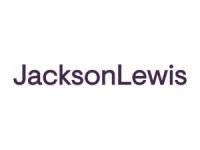As summer temperatures rise across California, it’s a good time for employers to review their responsibilities under Cal/OSHA’s heat illness prevention standards. These rules apply to both outdoor and indoor workplaces and are designed to protect employees from heat-related illnesses and injury.
The outdoor heat illness prevention standards apply to all outdoor places of employment. For outdoor workplaces, employers must provide fresh drinking water, access to shade, and allow cool-down rest breaks when temperatures exceed 80°F, acclimatization procedures, and emergency response procedures. Additionally, high-heat procedures are required for specific industries including agriculture, construction, landscaping, oil and gas extraction, and transportation of certain products and materials. When the temperature reaches or exceeds 95°F, additional steps are required, such as closer monitoring and more frequent communication with employees. Training is also required for all outdoor employees and supervisors so that they can recognize the signs of heat illness and know how to respond.
Indoor workplaces are also covered under a newer regulation that took effect in 2024. If the temperature inside reaches 82°F or more, employers need to provide water, cool-down areas, acclimatization procedures, emergency response procedures, and supervisor and employee training. These regulations do not apply to incidental heat exposures where an employee is exposed to temperatures between 82-95°F for less than 15 minutes in any 60-minute period, with some exceptions. If the temperature or heat index hits 87°F, or if employees wear clothing that traps heat or work near a high radiant heat area and the temperature reaches or exceeds 82°F, monitoring and additional controls are required.
Finally, under both the outdoor and indoor standards, employers are required to establish a written Heat Illness Prevention Plan. This plan must contain the procedures implemented by the employer for the provision of water, shade, or cool-down areas, emergency response procedures, acclimatization procedures, and procedures for responding to high-heat work environments.
If a business includes both indoor and outdoor work, it’s important to evaluate each area separately and make sure the right protections are in place for each environment.





 />i
/>i
